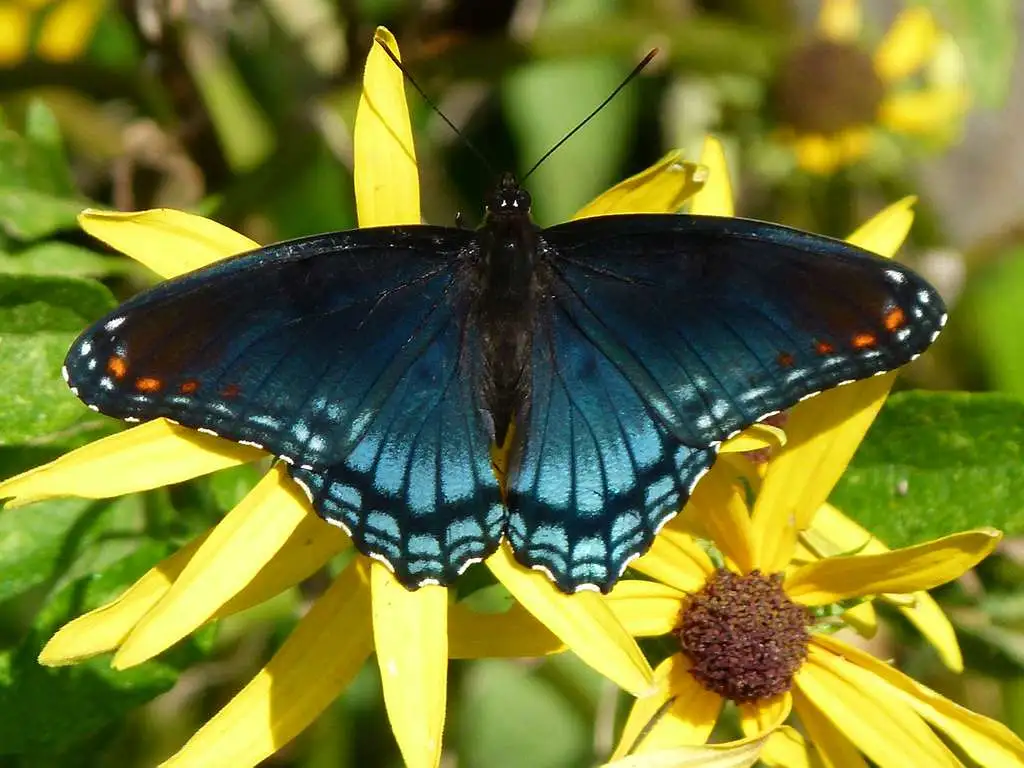“Happiness is a butterfly which, when pursued, is always just beyond your grasp, but which, if you will sit down quietly, may alight upon you.” — Nathaniel Hawthorne
The Red Spotted Purple Butterfly has long been a subject of fascination. Its vibrant colors and intricate patterns have made it a symbol of beauty and transformation in various cultures and spiritual beliefs. This butterfly (with its striking red spots and purple hues) is a symbol of profound transformation and change.
The Meaning of This Harlequin Beauty
“Just when the caterpillar thought the world was over, it became a butterfly.” — Anonymous
The Red Spotted Purple Butterfly carries a wealth of symbolic meanings. Historical references often associate it with the soul or spirit, signifying resurrection and immortality.
In Native American cultures, for instance, butterflies are seen as a symbol of joy and change. In Japanese folklore, they are frequently associated with the souls of the living and the dead. In ancient Greek culture, butterflies represent the psyche or the soul, and its attribute of immortality.
Rarity and Conservation
“Butterflies are self-propelled flowers.” — R.H. Heinlein
The Red Spotted Purple Butterfly is not considered rare, but its population trends are influenced by habitat loss and climate change; habitat loss due to deforestation, urbanization, and agriculture is a significant threat.
Climate change also affects butterfly populations by altering the distribution and availability of host plants and suitable habitats. Conservation challenges include preserving its natural habitats and the host plants its caterpillars feed on. Here are four steps in how to attract these bewitching insects:
1. Plant Host Trees: Red Spotted Purple butterflies prefer to lay eggs along the tips of cherry or willow leaves. They also prefer cottonwoods. Try to find shorter trees that are somewhat isolated along forest edges.
2. Provide Food: Unlike many butterflies, Red Spotted Purples are more attracted to rotting fruit, particularly wild cherries, apples, and deer berries. They also enjoy overripe bananas, citrus, and other juicy fruits.
3. Create a Suitable Environment: These butterflies are often found near water courses or along power or gas line right of ways near forest edges. They’re also commonly found in suburbs.
4. Lighting Conditions: If you’re raising caterpillars, keep your room light on 24 hours a day so that caterpillars feed through to adult and bypass hibernation.
Spiritual Significance
“The butterfly counts not months but moments, and has time enough.” — Rabindranath Tagore
In spiritual beliefs, the Red Spotted Purple Butterfly is regularly seen as a messenger from the spirit world. It is associated with transformation, rebirth, and the soul’s journey. Various rituals, myths, and folklore are centered around this enchanting creature.
In Christian symbolism, the butterfly represents resurrection and eternal life.
In Chinese culture, two butterflies flying together are a symbol of love.
And in some shamanic traditions, butterflies are considered the bringers of dreams and visions.
Attraction and Habitat
“Love is like a butterfly: It goes where it pleases, and it pleases wherever it goes.” — Anonymous
Attracting these butterflies to your garden involves planting their preferred host plants, such as willows, cherries, and poplars. They thrive in a variety of habitats, including forests, meadows, and even suburban areas.
Forests provide them with ample host plants and protection from predators. Meadows offer a variety of nectar sources, and suburban areas can provide suitable habitats if gardens contain their host plants.
Dietary Habits
“What the caterpillar calls the end of the world, the master calls a butterfly.” — Richard Bach
The dietary preferences of the Red Spotted Purple Butterfly caterpillars include various species of deciduous trees.
The caterpillars are particularly fond of willow, cherry, and poplar leaves. These leaves provide the necessary nutrients for the caterpillars to grow and metamorphose into butterflies.
The adult butterflies, on the other hand, have a more varied diet. They feed on tree sap, which provides them with sugars and minerals. They also feed on rotting fruit, which offers a rich source of nutrients. Occasionally, they may feed on nectar from flowers, especially when other food sources are scarce.
Symbolism in Art and Tattoos
“Butterflies are nature’s angels. They remind us what a gift it is to be alive.” — Anonymous
The Red Spotted Purple Butterfly has been a popular motif in art, literature, and tattoos, symbolizing transformation, freedom, and beauty. In visual arts, this butterfly is often depicted in vibrant colors, capturing its natural beauty and elegance.
Many artists use it as a symbol of transformation, reflecting personal growth and change. In literature, it typically symbolizes freedom and the fleeting nature of life. In the world of body art, butterfly tattoos are popular for their aesthetic appeal and deep symbolism. A Red Spotted Purple Butterfly tattoo can symbolize personal transformation, freedom, and peace.
Cultural Significance
“The butterfly is a flying flower, the flower a tethered butterfly.” — Ponce Denis Écouchard Lebrun
Across diverse cultures spanning continents and centuries, the red spotted purple butterfly emerges as more than just a fluttering beauty; it embodies profound symbolism and cultural significance.
In various indigenous traditions, including Native American, Japanese, and Greek cultures, the butterfly is revered as a messenger between the earthly realm and the spirit world, symbolizing the soul’s journey and the cyclical nature of life and death.
It dances through the annals of history, appearing in ancient Greek mythology as the embodiment of the psyche or soul’s immortality, and in Japanese folklore, where it carries the souls of the living and the departed.
In Christian symbolism, the butterfly is a potent symbol of resurrection and new beginnings, echoing the transformative journey from caterpillar to butterfly as a metaphor for spiritual rebirth. Its presence in cultural rituals, art forms, and literary narratives further underscores its enduring resonance as a universal symbol of beauty, metamorphosis, and the eternal cycle of life.
Alluring Facts About the Butterfly
“There is nothing in a caterpillar that tells you it’s going to be a butterfly.” — R. Buckminster Fuller
This butterfly species exhibits intriguing behaviors and unique characteristics; It is known for its mimicry, where it imitates the coloration of toxic species to deter predators. Its role in ecosystems is vital, contributing to pollination and serving as an indicator of environmental health.
One lesser-known fact is that the Red Spotted Purple Butterfly is adept at disguising itself. During its caterpillar stage, it resembles bird droppings to avoid predation. As an adult, it mimics the coloration of the poisonous Pipevine Swallowtail to deter predators.
Conclusion
“The butterfly’s attractiveness derives not only from colors and symmetry but from the changeability of the pattern.” — Anton Pavlovich Chekhov
The Red Spotted Purple Butterfly is a creature of beauty and symbolism. Its significance in culture, spirituality, and nature is profound.
Its captivating beauty and the lessons we can learn from its transformation are truly a gift from nature. As we delve deeper into its world, we discover fascinating facts about its behavior, diet, and habitat. We also uncover its rich symbolism in art and tattoos, reflecting our own human experiences of transformation and growth.
Let us continue to appreciate and protect these majestic creatures, encouraging their presence in our gardens and in our lives. Their beauty serves as a reminder of the wonders of nature that surround us, and their transformation inspires us to embrace change with grace and resilience. Let the Red Spotted Purple Butterfly guide us in our journey of exploration and discovery, in nature and within ourselves.

